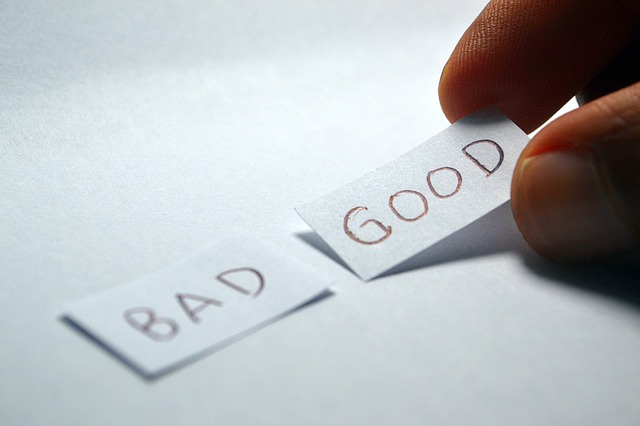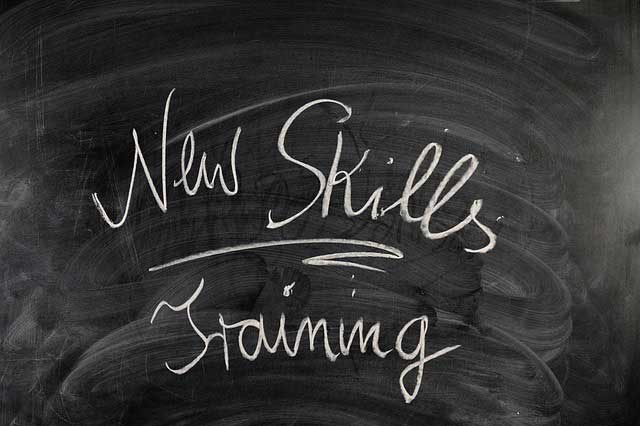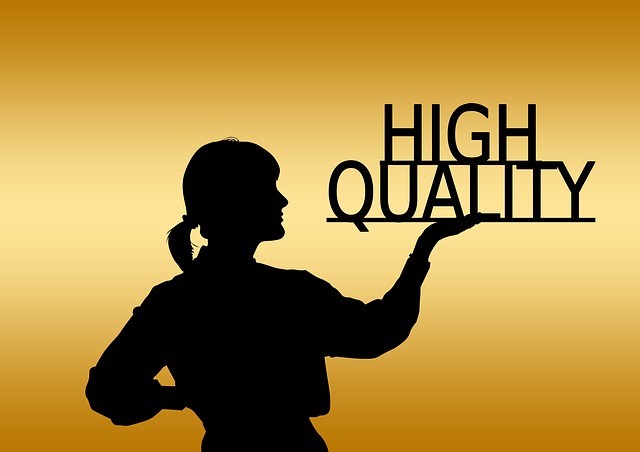Updated May 31, 2023
TQM Elements for TQM’s Success – For this article, I’d like to touch upon essential topics so that the foundation and argument about the elements prevalent in Total Quality Management (TQM) come out clear. The way I see quality is in the form of a House. A house that’s damage-free, resilient to deviation or interference of any sort, or a strong, long-lasting house.
Understanding Quality
In terms of TQM manufacturing within industries, quality comes across as a simple measure of the excellence of a product. It is the state a product reaches, devoid of defects, significant variations, or deficiencies.
This level of success in terms of perfection comes through strict and committed monitoring of processes, systems, and manual work. Quality assures uniformity between products of the same line and ensures that the purpose of the product is achieved thoroughly, thus, maintaining the standard of the product.
Quality is key in achieving the desired outcome or specification, which is spelled out by customers or consumers of a product. Here, a product can be interchangeable as even a service; for example, providing support services after a consumer purchases a product or, for that instance, a call center providing technical support also come under the services/product offered by an organization.
ISO 8402-1986 standard defines quality as “the totality of features and characteristics of a product or service that bears its ability to satisfy stated or implied needs.” Satisfying customer needs has taken precedence since the market has become based on consumerism. In an effort to produce long-lasting, high-quality products and services, it has become pivotal to ensure that internal processes work fine and without hindrances, in addition to meeting customer needs.
Quality can even be described as the epitome of trust and reliability for a product. While my perception of quality can differ entirely from yours, bringing everyone under the same umbrella and understanding within organizations becomes necessary. For this, the culture imparted must bear this standard throughout about quality. This will ensure that everyone in this culture knows the expected quality. Here is where Total Quality Management, or TQM, emerges.
Total Quality Management (TQM Elements) Declassified
You can define Total Quality Management as a management approach that ensures the long-term success of a product or service through customer satisfaction. The TQM approach keeps in mind the needs and wants of the customer and brings about natural and beneficial changes within the qualitative aspect of businesses.
This is one TQM management approach that involves all the members of the organization working on the efforts to improve the products’ quality, processes, services, and the culture they are subjected to. The TQM approach is a disciplined management system for a customer-centric organization willing to effectively and efficiently increase the quality of its products, services, and processes. TQM also aims at making efficient the behavioral aspects of employees working towards enhancing the quality of their task management, thus, improving the outcome of their work.
Implementing TQM organization-wide can be tedious and requires proper and systematic approaches. TQM fosters an environment that urges the organization to constantly and continuously upgrade its ability to deliver products and services of optimum quality as needed by the customers and consumers, all without compromising the ethical values of the system.
Listed below are some of the key concepts of TQM as prescribed by the TQM effort by the US Navy back in the 1980s:
- “Customers’ requirements define quality.”
- “Top management holds the direct accountability towards quality improvement.”
- “Systematic analysis and improvement of processes and workflow aid in increasing quality.”
- “Improvement of quality is an organization-wide and continuous effort.”
Correctly including TQM as the means to improve quality and instilling it as a part of the workplace culture is crucial to create a revolutionary change within an organization.
Each organization has a distinctive and unique culture that helps get the most out of the professionals working there. Implementing TQM as a culture is crucial for organization-wide change and reformation. TQM is not just a process change but also a workplace cultural change that motivates individuals to perform tasks in a way that leads to highly enhanced quality.
Building a Solid Foundation – Building a Quality House
In the face of competition, standing as a formidable opponent to other organizations takes much effort. With quality, you can bag quite the lead. With TQM, it is known that organizations and departments alike make good progress with their quality. It’s like building success from the ground up, like building or constructing a house.
Within the paradigm of TQM, 8 essential TQM elements form the crux of the approaches mentored for this unique system. The success of the TQM framework depends on these TQM elements that are put together and further categorized into 4 groups. They are as follows:
- Foundation
- Building Bricks
- Binding Mortar
- Roof
Let’s sneak peek into these groups and then divulge into their components to gain a wholesome understanding of these TQM elements.
Group 1 – Foundation
Lying the foundation for TQM within your organization are the following TQM elements:
- Ethics
- Integrity
- Trust
These foster sincerity, openness, and fairness among employees.
Group 2 – Building Blocks
These TQM elements are the four walls of your quality house that enable the house to stand straight and tall. These bricks are carefully placed on the foundation in an effort for it to reach the roof of recognition and support it:
- Training
- Teamwork
- Leadership
Group 3 – Binding Mortar
Bricks without mortar is a house of hay. This element brings the rest together by a certain coercion. This is famous:
- Communication
Group 4 – Roof
A house without a roof isn’t a house at all. This includes the bearer of solitude and award:
- Recognition
8 TQM Elements Disclosed
Here are the successful TQM factors for your TQM implementation. These TQM elements are surely going to drive your business to heighten quality, all with quick results:
1. Ethics
Ethics can be described as an individual’s understanding of what they deem right or wrong or good or bad at a workplace. Ethics form the gray decision area where an employee can decide what is good to be undertaken and what is bad that shouldn’t be undertaken.
Ethics is a driving force that teaches an individual to follow the code of conduct set up by a particular organization and maintain a friendly workplace environment. With rules and regulations as part of organization policies, individual ethics form the basis for an employee’s behavioral conduct towards the business and their fellow colleagues.
Adhering to these guidelines is essential for good workplace performance, and many organizations tie behavioral competencies to work ethics, reviewing employees accordingly. This link enables qualitative work within the department and organization. With qualitative work comes high-quality output, and with high-quality output comes positive customer response. Thus, this ensures TQM is a success upon implementation. High levels of work ethics can lead to efficient adherence to performance indicators, thus, promoting highly efficient professionals who care about the business objectives and work towards them. A checkmark for TQM.
2. Integrity
Upholding values and virtues such as honesty, justice, morals, and sincerity defines integrity. At the same time, knowing that a particular action is wrong and ensuring they aren’t part of such debauchery forms an excellent example of integrity. Making sure that adherence is part of good conduct, adherence when coupled with work ethics, can dramatically increase productivity and can display a positive representation of that individual in and around the workplace. Integrity ensures that the principles of TQM can be easily embedded within an individual and, if popularized, can affect an entire organization, thus, enabling the efficient trickling down of TQM philosophies for high quality.
TQM cannot thrive in an environment where spreading rumors, backstabbing, and office politics are prevalent because TQM requires total and organization-wide participation and collaboration among team members. Changes in systems, processes, and services can only be implemented if the people driving them are on the same page. The foundation TQM elements, such as integrity, can help accomplish this correctly and at the right time.
3. Trust
A sports team can only overcome obstacles and win with relentless collaboration and trust among the team members. This applies to organizations on the brink of change, a change towards quality. Team members involved in TQM must trust each other to ensure complete participation. Trust can evolve into a relationship between team members, resulting in active decision-making. Thus, implementation can be successful. It can also encourage commitment and foster individual risk-taking, as this individual would know that the team members have their back in critical situations.
Trust trickles down to TQM sessions, reflecting every move toward customer satisfaction. Increased customer satisfaction develops customers’ trust in the brand, product, or service. Trust fosters a healthy and cooperative environment for the implementation of TQM.
4. Training
Training forms a quintessential part of the life cycle of the TQM framework. Managers and supervisors are crucial as forerunners in successfully implementing TQM sessions. They need to cascade to every employee within the organization the importance of the TQM elements and the basic approach, that is, TQM. Training employees to enhance their interpersonal skills, decision-making, and problem-solving abilities, can benefit the implementation. This approach can help bridge the gap between the business’s quantitative output and customers’ quality expectations.
The creation and formation of TQM need effective employees to understand the meaning of TQM and who can contribute towards bringing about a change in the quality structure. Therefore, it is essential to undertake TQM training.
5. Teamwork
With TQM needing the cooperation of the entire department or organization, it comes as a no-brainer to have an element called “Teamwork” included as one of the building blocks of TQM. When team members take a collaborative stance, it encourages quicker and better discussion and implementation of solutions.
Teamwork would even provide the TQM process with feedback that can lead to permanent improvements within processes and systems. Within teams, people can raise good feedback and come up with good initiatives pertaining to quality.
With problems surfacing, teamwork also promotes proactive solution-sharing options to help find effective, preventive solutions for issues affecting a business.
TQM supports the idea of three different types of teams. They are as follows:
- Quality Improvement Teams (QITs) – These temporary teams deal with specific problems/issues that crop up within a business. The normal tenure for such teams is 3-12 months.
- Problem-Solving Teams (PSTs) – These are temporary teams to solve certain problems, identify causes, and resolve issues. The tenure for such teams is normally one week to 3 months.
- Natural Work Teams (NWTs) – These teams comprise skilled professionals who share responsibilities and tasks. Concepts such as quality circles, self-reliant teams, and employee involvement teams are undertaken by such teams. The tenure for such teams is 1-2 hours a week.
6. Leadership
Leadership comes across as the most crucial element within TQM. It is essential at every stage within the framework. A leader is expected to provide employees with an inspirational vision and guide subordinates through strategic moves. A leader keeps the program’s goal in mind while providing focus, a sense of direction, and clear instructions to ensure its success. In TQM, maintaining top-notch quality at all times becomes the responsibility and duty of top management. Hence their active involvement in the quality process is essential.
A leader’s thorough understanding and belief in TQM is expected, as it motivates team members to embrace the TQM culture and move forward with commitment.
7. Communication
Binding everything together and cementing the relationship of the employees with the element of quality is effective communication. Effective communication enables employees to learn better and be able to express better. This facilitates innovative ideas and a proper medium to get them through.
There are different kinds of communication between employees, and these variations bring about a proper flow of information:- Downward communication – The flow of information that takes place from the managers to employees.
- Upward communication – The flow of information that takes place from employees to top management.
- Lateral communication – The flow of information that takes place among different departments.
8. Recognition
The roof of your quality house is recognized. Recognizing someone’s work is extremely important in a nowadays’ competitive environment. Acknowledging brilliant work promotes healthy competition among individuals striving for recognition. Recognition enables an individual to put their best foot forward to be in line for a sparkling reward. It is but a boost to human morale and pride.
You can think of it as a catalyst bringing competitive individuals to perform their best, thus enabling the smooth functioning of the TQM framework. This will surely enhance the quality of the work belted out.
These were the 8 essential TQM elements that have proven TQM’s success. Hope you had a good read and have ideas and motivations to tread on the path of total quality.
Recommended Articles
We hope that this EDUCBA information on “TQM Elements” was beneficial to you. You can view EDUCBA’s recommended articles for more information,












